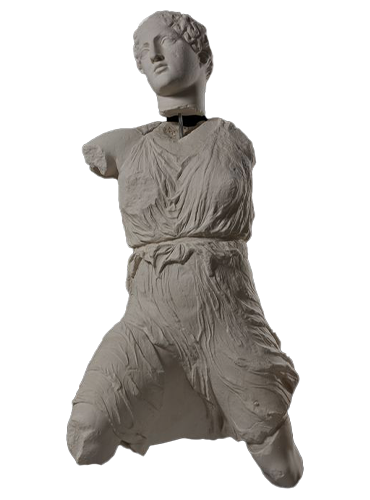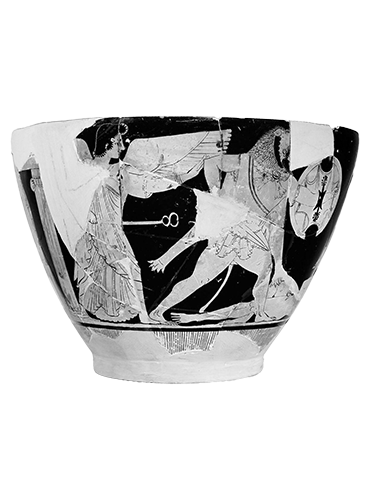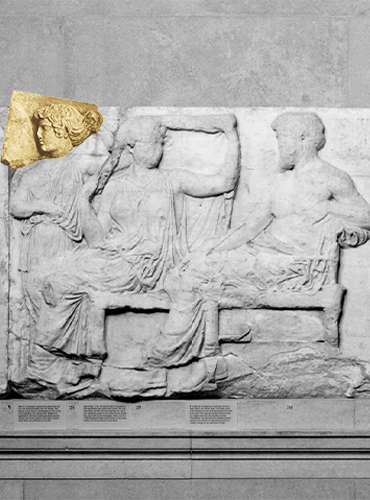Iris
Although lacking in iconography when compared to such figures as Zeus or Athena, Iris, personification of the rainbow, nonetheless holds an important place in Greek culture. In 1889 the head of Iris was found which fit a missing part of the East frieze on the Parthenon. Charles Waldstein notes in the The American Journal of Archaeology and of the History of the Fine Arts, “They asked me to examine the fragment, and I at once felt assured that it was the head belonging to Iris in the East Frieze of the Parthenon, the slab to which it belongs now being among the Elgin marbles in the British Museum.” The marble frieze, now residing in the British Museum, depicts the procession of Olympic gods. Among these are Hera and Zeus, seated, and standing next to Hera is Iris. Her direct proximity to Zeus and Hera emphasizes her important place in the Greek pantheon. Although not depicted here with wings, the statue of her on the west pediment of the Parthenon originally had a pair fashioned from bronze. Iris’s position on the Parthenon’s west pediment is another display of her importance in ancient Greece. She appears not only in a variety of artistic works, but routinely appears in mythology as well. Notably, she acted as messenger during the plight of Phineus from the harpies. She appears as well in Virgil’s Iliad, primarily as a messenger for Hera and Zeus, and once more in the battle between gods and giants. “In the meantime, Iris, the messenger of the gods, called together all those in high heaven and those who dwell in rivers and springs. She even summoned the Fates from the underworld.” Iris also plays an important role in the telling of the Iliad. Wherein, Hector and the other Trojans are attempting to make off with the body of Patroclus. However, Iris secretly goes to Achilles and urges him to act. “But Hector would have carried off the body, had not Iris, at Hera’s command, flown to the son of Peleus and bidden him arm secretly, unseen by Zeus and the other gods.” Iris repeatedly in Greek mythology, throughout various tellings and iterations she holds various positions and roles, such as the myth of Eros.

(437-432 BCE)
Acropolis Museum

Skyphos
(4th quarter 6th century BCE)
The Louvre

Temple Relief: The Parthenon Sculptures
(438BC – 432BC)
British Museum
Head Fragment found in 1899
Acropolis Museum
Publication about the restoration: THE NEWLY DISCOVERED HEAD OF IRIS FROM THE FRIEZE OF THE PARTHENON.